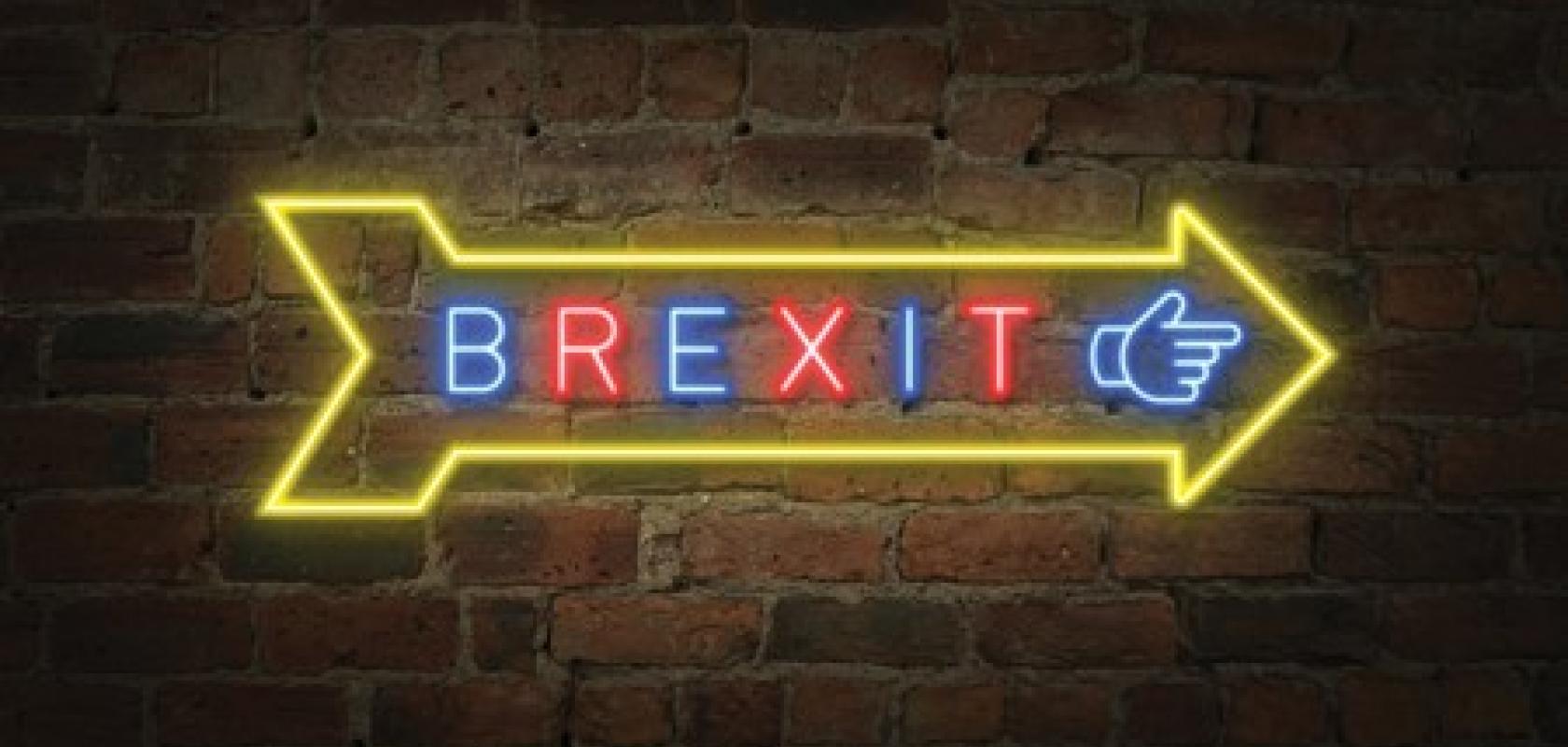The UK Industrial Vision Association’s Neil Sandhu and Allan Anderson assess some of the implications of the trade deal between the EU and the UK
When UK Prime Minister Boris Johnson announced on 24 December that a trade deal had been agreed between the UK and the European Union following Brexit, he said: ‘The devil is in the detail.’
Well, the UK vision industry is certainly finding that to be the case, as it picks its way through the changes that the deal is bringing. However, while there are many operational complexities in adjusting to the new requirements, it is also very important to recognise the opportunities that the deal will bring.
UKIVA members include suppliers of machine vision components and systems, machine builders and systems integrators, and original equipment manufacturers (OEMs) which make use of vision in their products. Some members operate solely in the UK, while others have an international business base, so the association acts as a useful barometer for the impact of the deal in the industry.
The taxing question of tariffs
One of the major headlines around the deal was that there would be no tariffs or duties on goods traded between the UK and the EU, but that is only true to a limited extent. Zero tariffs apply to products manufactured in the UK being exported into Europe for use in Europe, or to products manufactured in Europe being imported into the UK for use in the UK, but with both subject to the ‘rules of origin’.
Rules of origin are a standard part of free trade agreements to prevent a country without a trade deal finding a cheap back door route to one market through another, such as accessing the EU market through the UK or vice versa. The rules of origin essentially require that only a certain percentage of the value of any product can originate from outside the respective territory for a product to qualify for zero tariffs, and there needs to be documentary evidence to prove this.
The exact percentage varies from one product to another, and is determined by the harmonised system (HS) code – developed and maintained by the World Customs Organization – assigned to the product. This code also determines the amount of duty (if any) that must be paid. HS classification of a product is based on its function, form or composition. This can be a difficult and challenging process.
The impact on the vision sector
Clearly, the additional import and export paperwork required as a consequence of the deal increases costs for vision companies, and things such as the allocation of HS codes are still being sorted out for products in the vision industry, which adds to the problems. Errors in the paperwork, such as the application of the wrong code, could even lead to a hold-up in supply of a particular consignment. In addition, certain components may also require export licences, based on their end use.
While the logistics of this are challenging at the moment, many vision companies already have well-established systems to deal with the paperwork needed to import and export products to non-EU countries, and in due course the process for EU transactions will also become routine, although this may take several months. Nevertheless, there will inevitably be some residual additional administrative costs, and companies will have to decide whether to increase prices or take a reduction in profits.
Exchange rate changes may mitigate this to some extent – at the time of writing, the value of the pound against the euro has increased by around 1.3 per cent since the announcement of the deal, making imported goods cheaper. However, exchange rates can be volatile for many other reasons, so relying on beneficial exchange rates may not be the best business practice.
The small UK manufacturing base for vision components means that around 90 per cent are imported, so the biggest impact of the new deal is likely to be felt by component suppliers. Of course, not all these components come from Europe; they are also sourced from many different regions including US, Canada, Japan and other countries in the Far East. A further complication for this sector, however, comes from the fact that products imported tariff-free from the EU will be subject to tariffs if it is subsequently re-exported to the EU.
Many UK vision companies serve markets in the Republic of Ireland, so for these transactions, tariffs would be added. Any goods from Great Britain destined for Northern Ireland, however, will not be subject to tariffs as long as they are not deemed to be at risk of leaving the UK customs territory. EU tariffs will be applied, though, to goods that are deemed ‘at risk’ of entering the EU’s single market. Suppliers that have significant sales in Ireland and mainland Europe, may need to consider establishing local offices and warehouses in these territories for direct supply, rather than routing through warehouses in the UK and paying the onward tariffs, which again creates increased costs.
For UK machine builders and systems integrators, however, the situation is quite different. Although all of the paperwork and associated costs related to the importing of components is just the same, because the vision components generally constitute a comparatively small proportion of the total project cost, there will be only a marginal impact on overall costs. In addition, since the production of the system will have a significant element of UK design, development and manufacture, their contribution to the total price is likely to be sufficient to satisfy the rules of origin for zero tariffs.
Certification
The beginning of the year saw the introduction of the UK Conformity Assessment (UKCA) and UKNI marks in the UK. UKNI marking will supplement, but not replace, CE marking for products in the Northern Ireland market; while, in Great Britain, the UKCA mark is required for all new products that would previously have required the CE mark.
CE marking continues to be recognised in the UK for existing products until the end of 2021. Although a large proportion of vision components sold in the UK are imported, their manufacturers will presumably decide whether or not to UKCA mark their products based on individual volume sales. This could lead to a reduction in the choice of vision components available in the UK.
UK machine builders and systems integrators will, of course, need to implement UKCA certification for UK sales, while maintaining CE certification for sales into the EU. The same will apply for OEMs who make use of vision in their products.
Looking at the wider picture
A major benefit of the deal is that much of UK manufacturing, including the automotive industry, can continue without major trade barriers. For example, Nissan has not only said that its Sunderland plant is secure for the long-term as a result of the deal, but has also decided to localise the manufacture of the 62kWh battery in Sunderland, so that all products qualify for tariff-free export to the EU. Currently, the batteries in its Leaf electric cars are imported from Japan.
A lot of industries were looking to move to higher levels of automation incorporating vision systems and robotics at the beginning of 2020 before the pandemic took hold. While many projects have been delayed, these will be reinstated as the vaccination programme helps economies reopen. The vision industry offers an extensive range of established and versatile technology that can be readily adapted to meet emerging requirements.
Another important factor from Brexit is the end of free movement, which means that there will be a shortage of the low-cost labour used extensively in many sectors, especially food, beverage and agriculture. That, combined with the fact that many industries that have people working in close proximity – such as meat and poultry processing and packing plants – have been hugely impacted by rapid spread of the virus, is likely to lead to increased investment in automation.
Help from UKIVA
The biggest immediate challenge for the vision industry resulting from the trade deal is understanding and implementing the new rules and regulations. UKIVA is part of the Processing and Packaging Manufacturing Association (PPMA) group, and UKIVA members have benefited from the wide range of support offered by PPMA on these issues.
The PPMA sits on the council of Export Partners UK to help fly the flag for British exporters, and is actively engaged with the UK government’s department for business, energy and industrial strategy (BEIS) and Make UK (the manufacturers’ organisation), to represent the interests of members who move goods in and out of the UK.
The PPMA members’ information library is a valuable tool for sourcing relevant business information to help members make informed decisions. It provides access to hundreds of documents and associated government and industry links to provide advice on importing and exporting, conformity assessment and access to business support templates. Also, the PPMA has issued six e-business updates to help bring some clarity post-Brexit and post-Brexit transition period.
The new normal
This phrase is generally used in the context of the pandemic but is equally applicable to the post-Brexit era. The layers of complexity arising from the deal will inevitably bring some real pain points for the vision industry in the short term, but it won’t be long before these processes become the new normal for doing business with the EU. These early disruptions should be outweighed by the increased opportunities for machine vision through significant need for automation.


Neil Sandhu, from Sick UK, is the incoming UKIVA chairman, while Allan Anderson, from ClearView Imaging, is the outgoing chairman
Write for us
Please let us know how you are handling new Brexit trading rules: greg.blackman@europascience.com.


